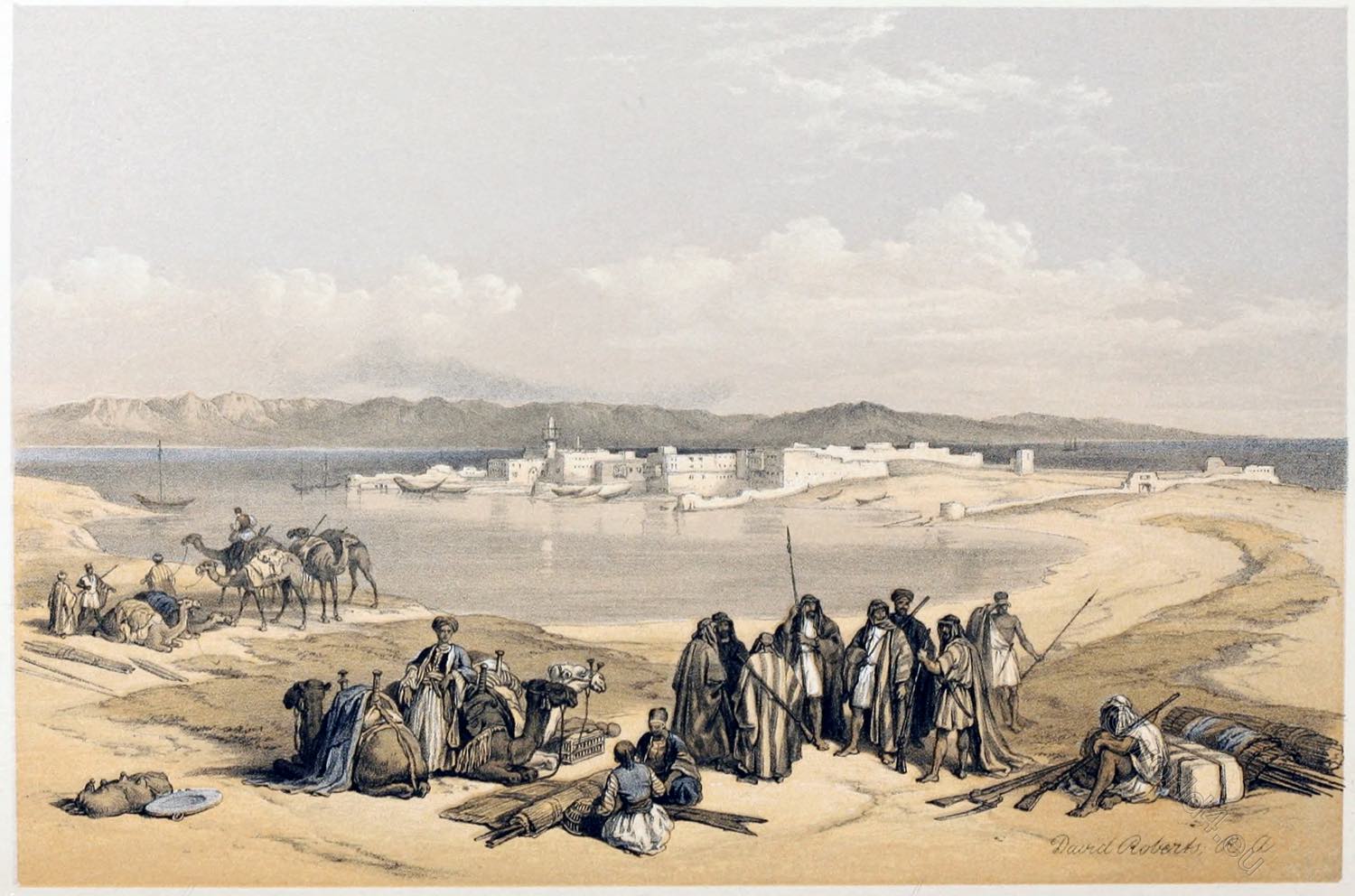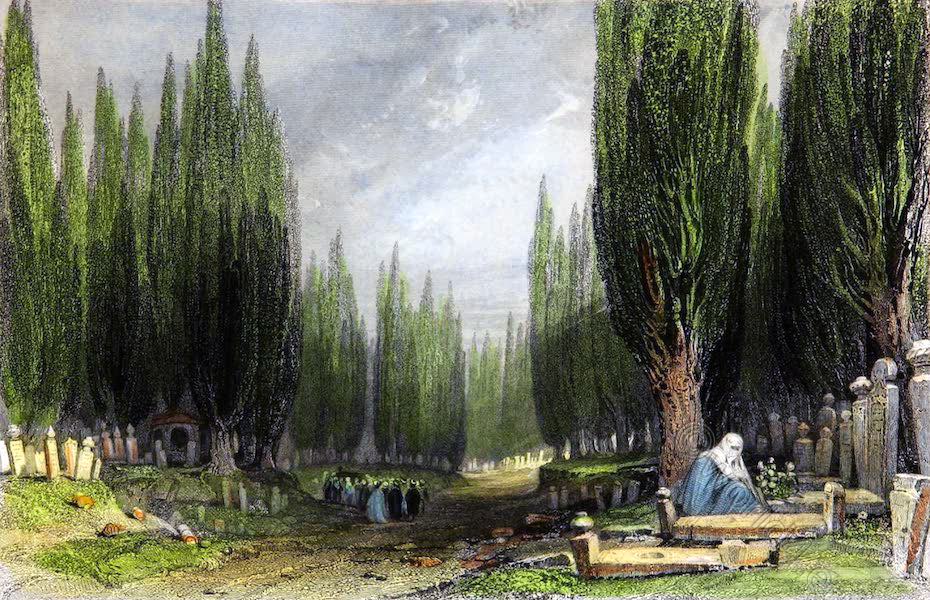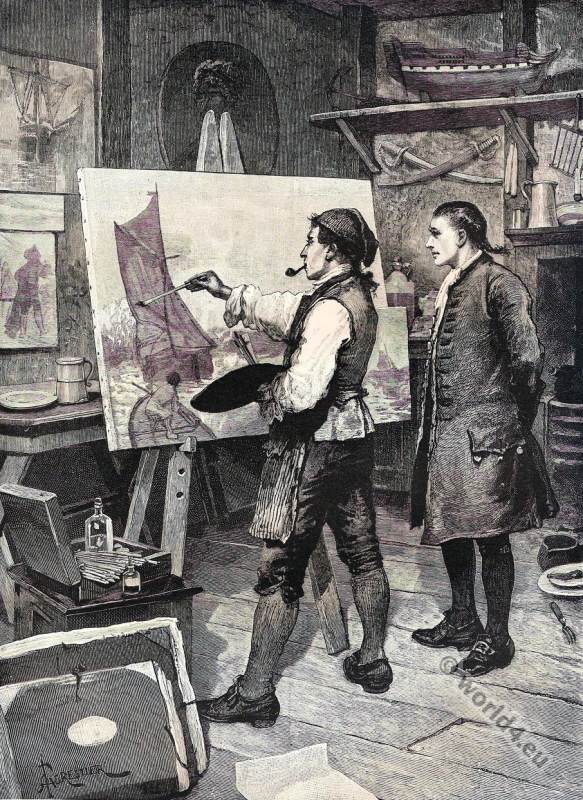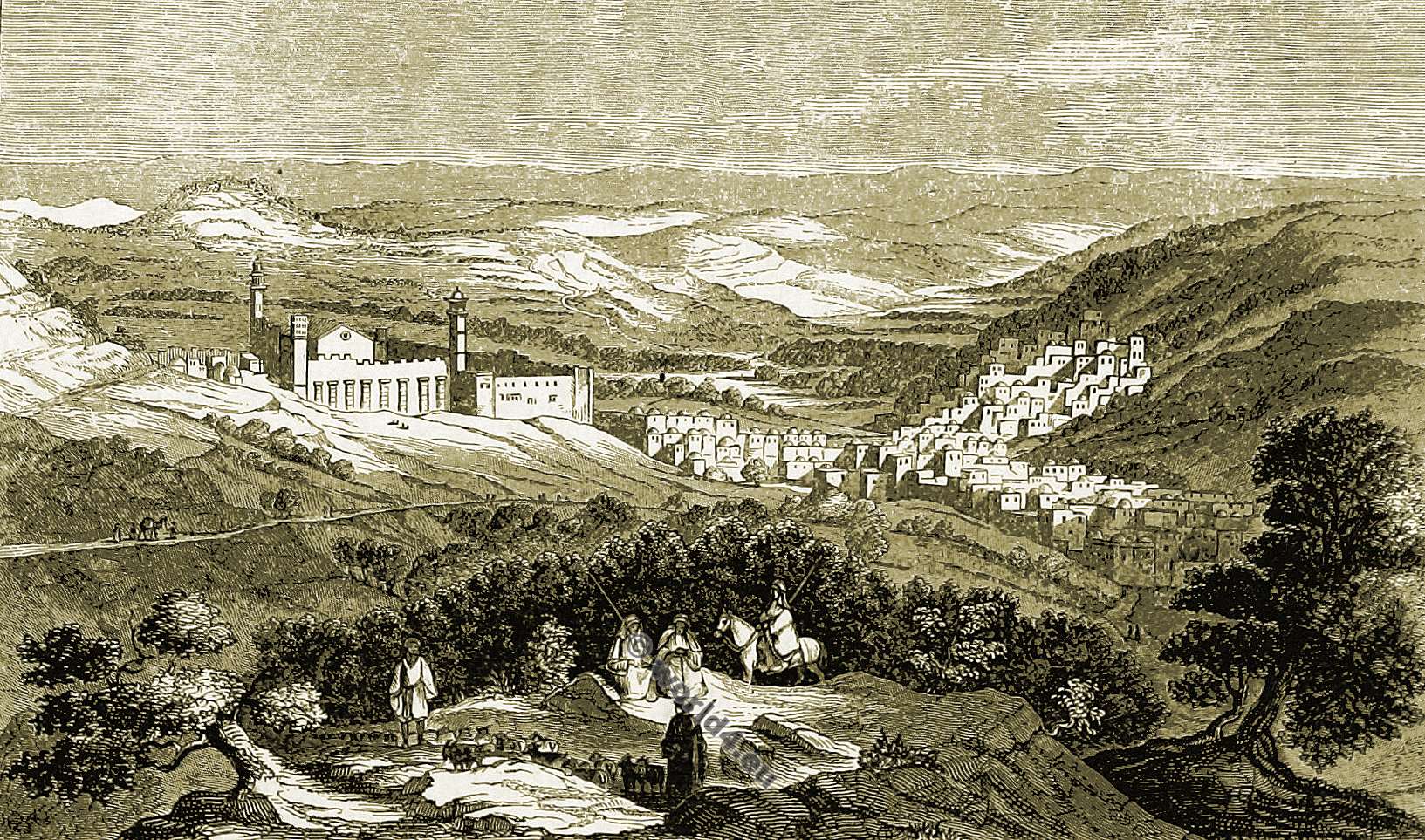Hebron is one of the four Holy Cities in Judaism, along with Jerusalem, Tiberias and Safed. In Islam, it is also one of the Four Holy Cities, after Mecca, Medina and Jerusalem. Hebron is located in the West Bank and is one of the oldest continuously inhabited cities in the world. In the time of the Canaanites it was a royal city and was inhabited by the Enakites. The city was known at times as “the city of Arba” (Jos 14, 15). Archaeological findings indicate that Hebron was founded in the 3rd millennium BC. The city is mentioned in numerous places in the Bible and was given as an inheritance to the descendants of Judah (Jos 21, 11) and Caleb (Jos 21, 12).
Hebron’s most important sight is the Cave of Machpelah, also known as the Cave of the Patriarchs or Tomb of the Patriarchs, which according to tradition contains the final resting places of the three arch-fathers Abraham, Isaac, Jacob and their wives Sarah, Rebecca and Leah. The Tomb of the Patriarchs is a sacred place for religious Jews as well as Muslims and Christians.
The Abraham Oak, also called the Oak of Mamre, stands at the place where, according to tradition, Abraham pitched his tent (Gen 18,1). Its age is estimated at 5000 years. Today, the area where the oak stands belongs to a Russian Orthodox monastery, which is inaccessible to the public.
The Abraham Mosque holds a cultural peculiarity: the prayer chair, a gift from Saladin from the 12th century, is the last remaining one carved from a single wooden peg. A second prayer chair of its kind fell victim to an arson attack in the Al-Aqsa Mosque (Jerusalem) in 1969.
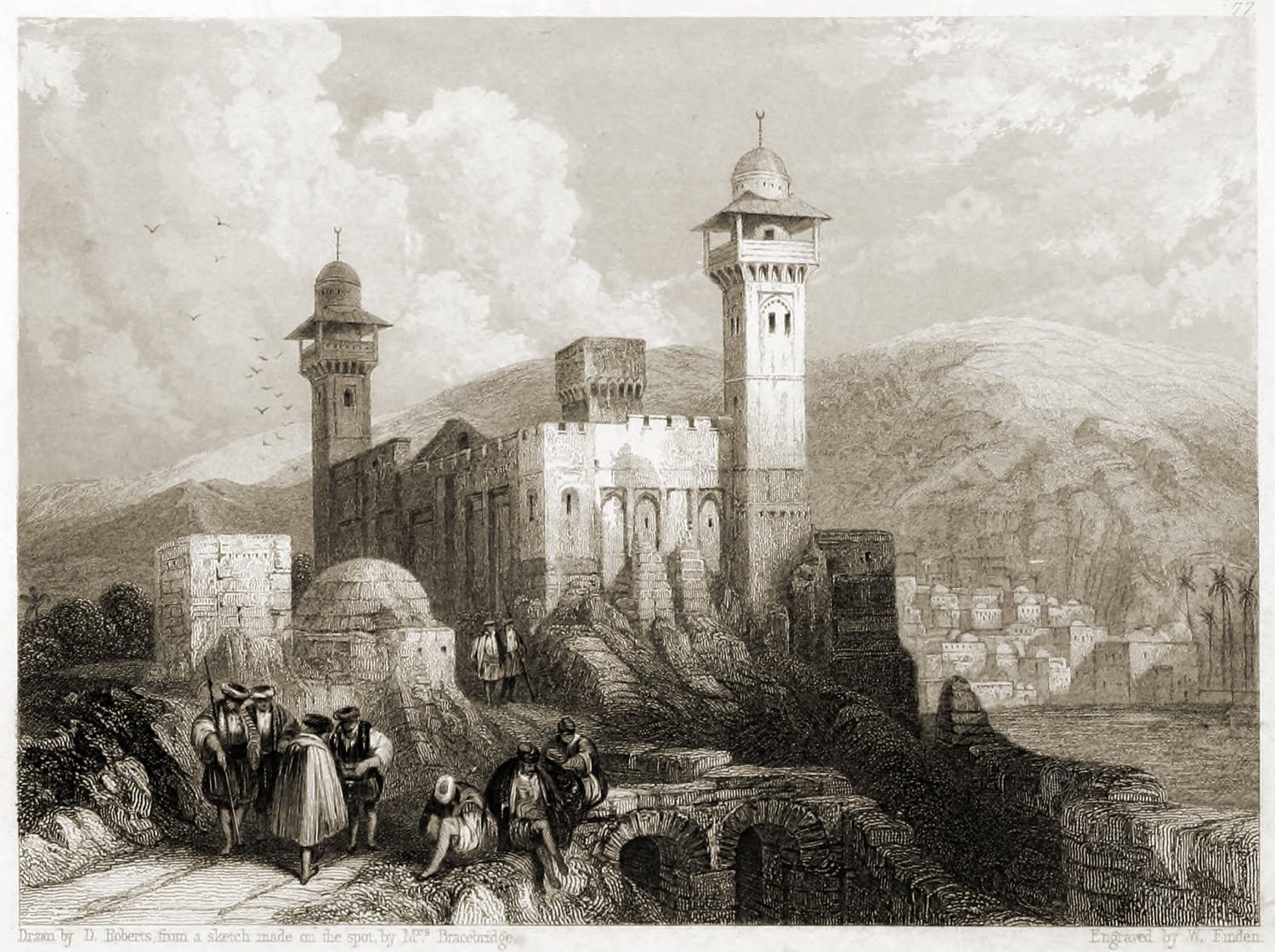
TURKISH MOSQUE ERECTED OVER THE TOMBS OF ABRAHAM AND THE PATRIARCHS.
Drawn by D. Roberts, from a Sketch made on the spot by Mrs. BRACEBRIDGE.
HEBRON
by Thomas Hartwell Horne
Hebron is an ancient city of Palestine, situated in the heart of the hill country of Judaea, about twenty-seven miles south-west from Jerusalem. Originally, it was called Kirjath-Arba, or the city of Arba, “which Arba was a great man among the Anakims.” (Josh. xiv. 15.) In the vicinity of this place Abraham abode, after he parted with Lot (Gen. xiii. 18.), and bought a field with a cave in which to bury his dead. (Gen. xxiii. 3—20.).
Besides Abraham and Sarah, his son Isaac, his grandson Jacob, with their wives Rebekah and Leah, and his great-grandson Joseph, were severally interred here. (Gen. xxiii. 19. xxv. 10. xlix. 29—33. 1. 12, 13.). When the Hebrews invaded Palestine, Hebron was the residence of a king (Josh. xii. 10.) named Hoham; who confederated with four other Canaanitish kings against Israel; but they were all discomfited and destroyed by Joshua. (Josh. x. 3, 4. 22—27.).
After which the city, being taken, was assigned to Caleb (Josh. xiv. 6—11.) agreeably to a promise given him by Moses. (Numb. xiii. 30—33. xiv. 5. 24.) Subsequently, it was made a city of refuge, and given to the priests. (Josh. xxi. 11. xx. 7.) Afterwards, when David succeeded Saul on the throne of Israel, he selected Hebron for his royal residence, and continued there until Jerusalem was captured from the Jebusites. (2 Sam. ii. 1. v. 4—9. 1 Chron. xii. xiii.) On the division of the kingdom under Rehoboam, Hebron fell to the share of the king of Judah. (2 Chron. xi. 10.)
Hebron, Habroun, or, according to the Arabic orthography followed by the moderns, El Hhalil, is a flourishing town, the flat-roofed houses of which are closely jammed together. It contains about four hundred families of Arabs. The hill above it is composed of limestone rock, partially covered with vines; and its end is clothed with a wood of olives. The hill beyond the mosque, which edifice forms a prominent object in our view, and which has never before been delineated or engraved, is more barren: and in the fore-ground there are masses of buildings thrown down and scattered in every direction; this portion of the town having been destroyed a few years since. The inhabitants are engaged in perpetual hostilities with those of Bethlehem, on which account it is less frequently visited by pilgrims.
A splendid church was erected over the graves of the patriarchs by the empress Helena it has long been converted into a Turkish mosque. According to Ali Bey, who visited it in 1807, the ascent to it is by a large and fine staircase leading to a long gallery, the entrance to which is by a small court. Towards the left is a portico, resting upon square pillars.
The vestibule of the temple contains two rooms; one of which is called the tomb of Abraham, the other that of Sarah. In the body of the church, between two large pillars on the right, is seen a small recess, in which is the sepulcher of Isaac, and in a similar one upon the left is that of his wife. On the opposite side of the court is another vestibule, which has also two rooms, respectively called the tombs of Jacob and his wife.
At the extremity of the portico, on the right hand, is a door leading to a sort of long gallery, which still serves for a mosque; and passing from thence, is observed another room, said to contain the ashes of Joseph.
All the sepulchres of the patriarchs are covered with rich carpets of green silk, magnificently embroidered with gold: those of their wives are red, embroidered in like manner. The sultans of Constantinople furnish these carpets, which are renewed from time to time. Ali Bey counted nine, one over the other, upon the sepulchre of Abraham. The rooms also which contain the tombs are covered with rich carpets: the entrance to them is guarded by iron gates, and wooden doors plated with silver, having bolts and padlocks of the same metal.
More than a hundred persons are employed in the service of this Mohammedan temple. The population of Hebron is considerable: the inhabitants manufacture glass lamps, which are exported to Egypt. Provisions are abundant, and there is a considerable number of shops.
*) Travels of Ali Bey, vol. ii. pp. 232, 233. Manuscript Communication from Mrs. Bracebridge.
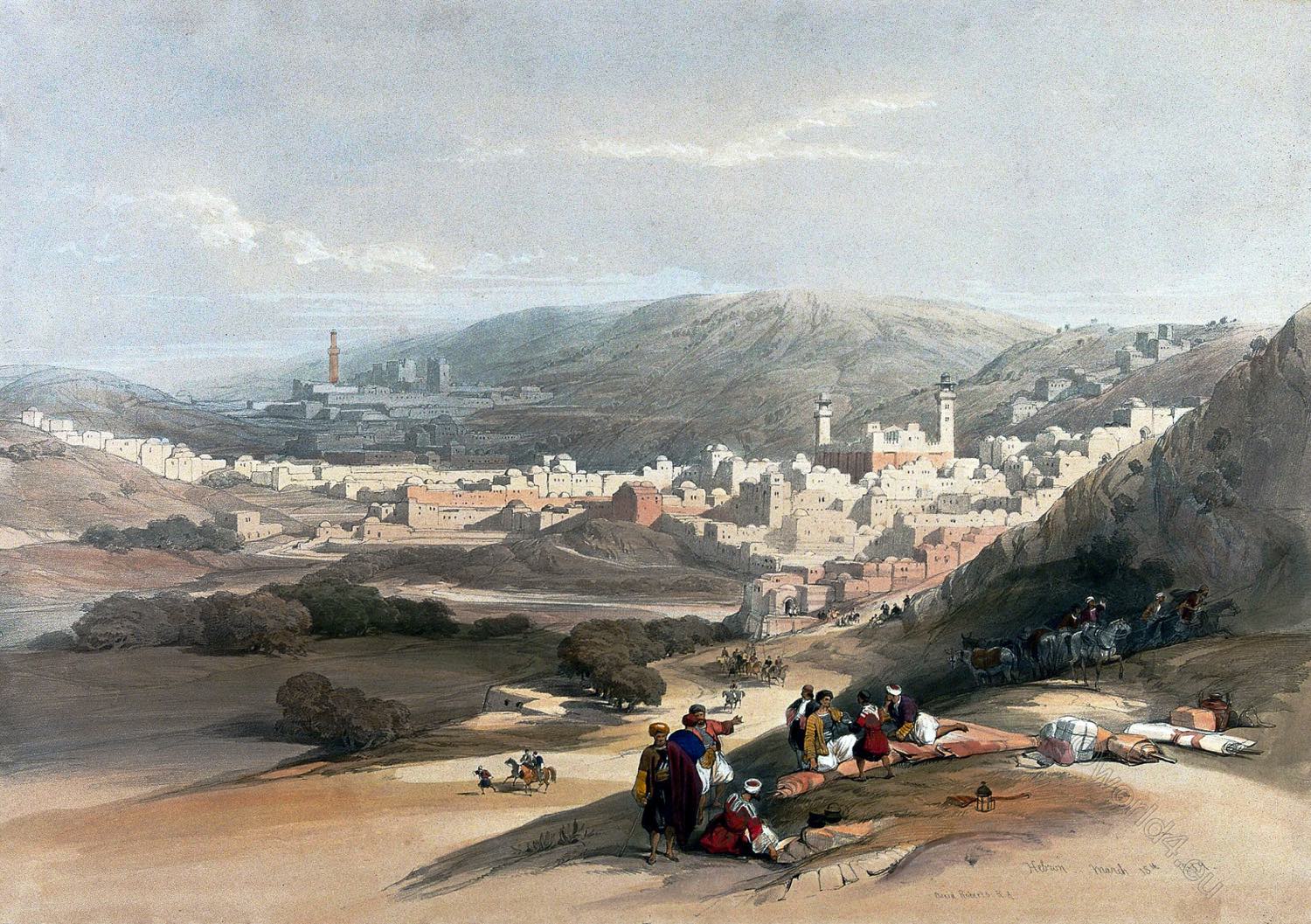
HEBRON.
by David Roberts
(Arabic الخليل al-Chalīl, DMG al-Ḫalīl, Hebrew חברון Chewron)
Hebron is one of the most memorable sites of Palestine, as the abiding place of Abraham, Isaac, and Jacob. It possessed one of the most ancient cities in the world, built “seven years before Zoar in Egypt;” 1) whose original name was Kirjath-Arba (City of Arba), so called from Arba, the father of Anak and the Anakim; it also bore the name of Mamre. 2)
From this neighborhood Jacob and his sons went to Egypt, to dwell with Joseph. After the conquest of Palestine by Joshua, it was made one of the six “cities of refuge,” and assigned to the priesthood as a residence. It became the royal city of David, where he reigned seven years and a half over Judah, and in Hebron he was anointed King over all Israel. It was in this royal city that Absalom raised the standard of rebellion. This was also one of the cities fortified by Rehoboam, and rebuilt by the people after the Captivity. 3)
Hebron suffered the common reverses of Judah in its latter days. It fell into the power of the Idumaeans; but was recovered from them by Judas Maccabeus. In the revolt against Rome, it was captured and burnt by Cerealis, the lieutenant of Vespasian. In later days’ its sanctity as the place of patriarchal burial superseded all other recollections; and in the eighth century it was called the Castle of Abraham.
This was also the name preferred by the Crusaders. The Mohammedans called it El-Khulil (The Friend), Abraham being distinguished among them as the “friend of God,” from the well-known expressions of Scripture.
On the invasion of Palestine by the Crusaders, Hebron followed the fate of Jerusalem, and was given (a.d. 1100) by Godfrey of Bouillon as a fief to Gerhard of Avennes. It was now to obtain another distinction, and (A. D. 1167) was raised to the rank of a Latin Episcopal See, of which Rainold was Bishop. The title of Bishop of Hebron was retained through a succession of prelates, but the Bishopric had soon fallen (a.d. 1187) under the dominion of Saladin; the Church was made a Mosque, and its possession given into the hands of a Mahometan population, who guard it with the most jealous vigilance, and are considered to be among the most violent bigots even of Mahometanism.
It had still one disastrous chapter in its history. In 1834 the whole surrounding country rose in arms against Ibrahim Pasha. A battle was fought near “Solomon’s pools,” and the revolters were driven back upon Hebron; they were followed, and the place was stormed, and given up to plunder.
This inflicted a blow on the town, from which its trade has not yet recovered; that trade however consisting of little more than of fruits, and of rude specimens of glass manufacture; glass lamps, and rings of the same material worn on the arms.
The population is about ten thousand, among whom are about fifty Jewish families. The Artist thus describes its aspect: — “On turning the side of a hill, the little town of Hebron burst upon us. Its situation is beautiful; and the houses glittering in the noon-day sun had a look of English cleanliness, after the wretched hovels of Egypt. The children who came out to meet us, were among the most beautiful I had ever seen. The countenance was truly Jewish, but with a healthy rosy colour which I have seldom seen out of England.” 4)
The conscription, a great source of suffering in all despotic governments, assumes in the East the shape of a national calamity. In the midst of all this beauty and brightness, “as we went,” continues the Artist, “to show our passports at the house of the Deputy-Governor, we found many women weeping on the steps, and the Deputy engaged in the examination of a number of the unfortunate inhabitants who had been seized by the conscription. They were brought out in succession from a filthy-looking dungeon, and after inspection were handcuffed, and sent off.”
The surrounding country abounds with legendary sites. The “Village of the Virgin” is supposed to have been one of the resting-places of the Holy Family in their flight into Egypt. A fine oak represents the Tree of Abraham; but it seems not improbable that the “Haram,” or Mosque, whose massive enclosure seems of Jewish building, covers the Cave of Macphelah. Into this enclosure, however, no Christian is permitted to enter.
1) Num. xiii. 2). Gen. xiii. 18. Gen. xxiii. 19. 3) xi. 25. 4) Roberts’s Journal.
Source:
- Landscape Illustrations of the Bible, consisting of views of the most remarkable places mentioned in the Old and New Testaments, from original sketches taken on the spot engraved by W. and E. Finden, by Thomas Hartwell Horne (1780-1862), William Finden (1787-1852), Edward Francis Finden (1791-1857), Joseph Mallord William Turner (1775-1851), Bartolomé de las Casas (1474-1566). London: John Murray: Sold also by Charles Tilt, 1836.
- The Holy Land, Syria, Idumea, Arabia, Egypt, & Nubia, by David Roberts, George Croly, William Brockedon. London: Lithographed, printed and published by Day & Son, lithographers to the Queen. Cate Street, Lincoln’s Inn Fields, 1855.
Related
Discover more from World4 Costume Culture History
Subscribe to get the latest posts sent to your email.

